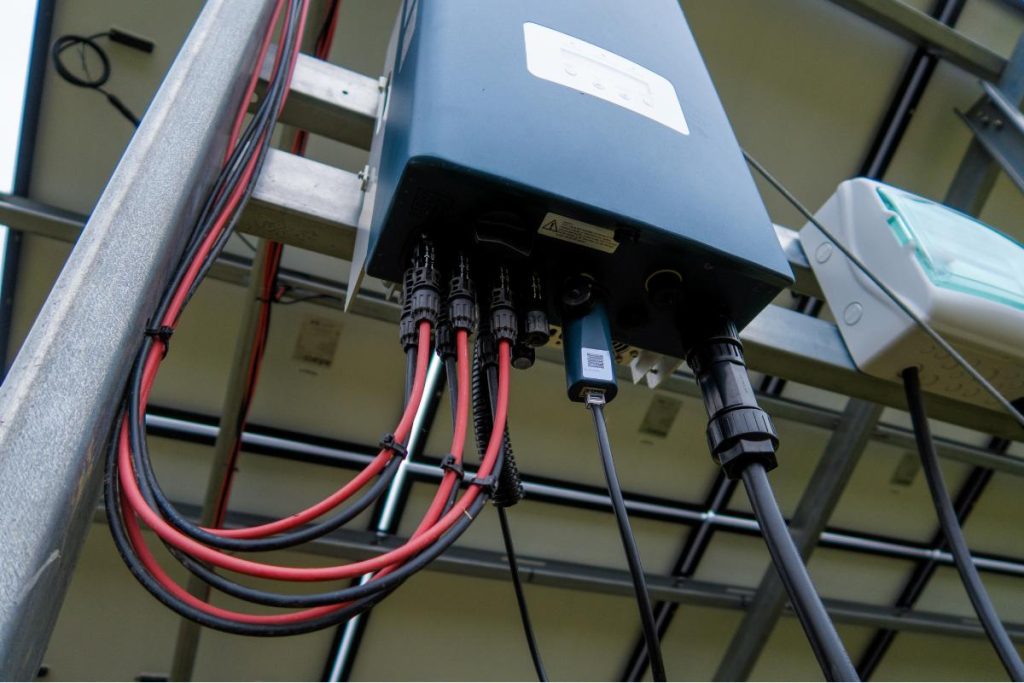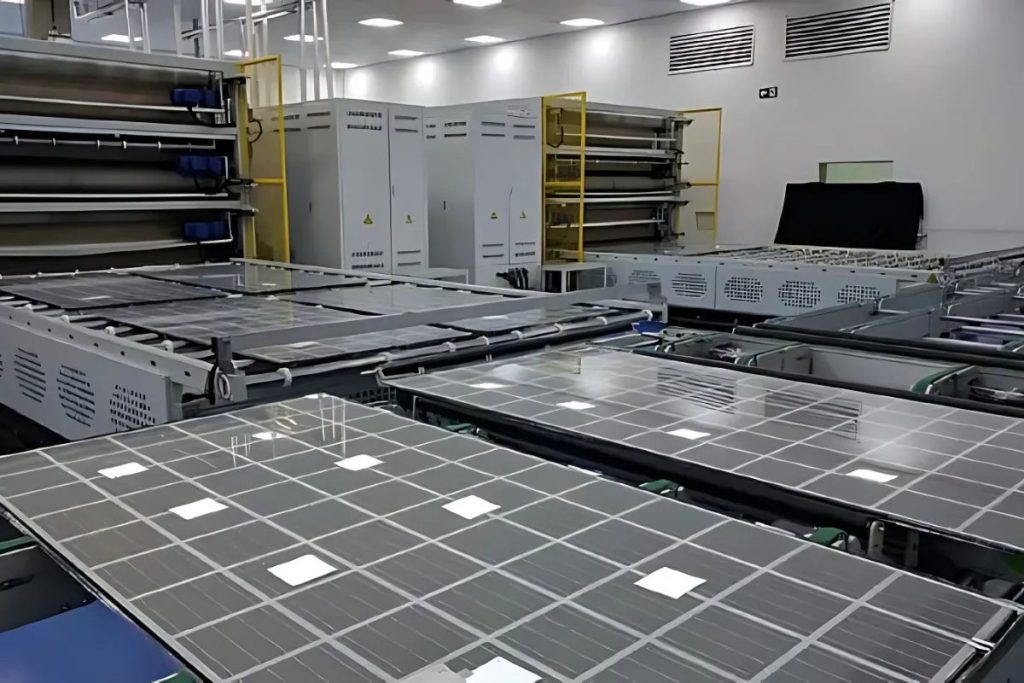Install solar energy is an increasingly common choice for those looking to reduce energy bill costs and adopt more sustainable practices. As well as being an economical long-term solution, solar energy contributes directly to preserving the environment.
However, even with the popularization of this technology, many people still have doubts about how to installing solar energy. In this article, we will explain the necessary steps to make it easier for those who want to adopt this technology in a practical and efficient way.
Evaluation and planning
Before starting to install solar panels, it is essential to go through the assessment and planning phase. Although often underestimated, this stage is crucial to ensuring that the solar system is efficient and delivers the expected results.
Good planning can avoid costly mistakes and maximize savings in the long term. In the following topics, we'll go into detail on how to assess the solar viability of your site and how to calculate your energy consumption to size the ideal system.
The time to see if the sun is in your favor
Before installing photovoltaic modulesIt is essential to assess whether the site has the ideal conditions to make the most of the sun's energy. Factors such as geographical location, roof pitch, the presence of shadows and solar orientation can directly affect the efficiency of the panels.
For those who want precision, using online tools that map solar incidence is a great idea. In addition, having a professional analysis ensures that all these factors are properly taken into account to avoid efficiency losses.
How much do you consume and what can you save?
To size your solar system correctly, you need to understand how much energy you currently consume. You can do this by looking at your electricity bills, which give you an average monthly consumption.
Once you have this information in hand, you can calculate the size of the system required to meet your needs. In addition, forecasting long-term savings is an essential step.
Using solar energy savings calculators can help you estimate the payback time, giving you a clear picture of the positive financial impact that solar energy can provide.
Step by step to install solar energy
The installation of a solar system may seem complex, but it is actually a process divided into well-defined stages. From document preparation to technical installation, each phase is crucial to ensuring that the system works efficiently and within the law.
Below, we will detail each of these steps, helping to make the process clearer for those who want to understand how install solar energy.
Documents in order and site preparation
Installing a solar energy system starts with the bureaucratic part. You need to gather the necessary documentation so that you can apply for access with the local electricity provider, especially for on-grid systems.
In addition, site preparation is key: the roof needs to be assessed to ensure that it will support the weight of the panels, and safety conditions for both installers and residents must be checked.
Choosing the best equipment for the job
A solar energy system is made up of several important components, such as solar panels, inverters, batteries (in the case of off-grid or hybrid systems) and support structures.
The solar integrator also deserves attention. They are responsible for the installation of the solar photovoltaic system, a fundamental part of the project. operation of the system. It is therefore important to choose your installer (or integrator) carefully. BYD has a vast network of partners throughout Brazil.
Holu's mission is not only to sell solar systems, but also to build lasting relationships
It is essential to choose high-quality equipment, taking into account factors such as efficiency, cost and the length of the warranty offered. Renowned brands and quality certifications are key elements in ensuring that the system will have a long service life and produce energy efficiently.
Installing the modules: "where the sun turns into energy"
The practical installation of photovoltaic modules begins with fixing the support structures to the roof or other surface. The panels are then connected to the inverter, which converts the captured solar energy into usable electricity.
To guarantee the efficiency and durability of the system, it is essential to follow the best installation practices, such as the correct alignment of the panels and the use of resistant materials. Rely on certified professionals to ensure that the work is carried out safely and with quality.
Connecting to the grid: the on-grid system in action
For on-grid systems, integration with the local electricity grid is an essential step. After installing the modules, the system needs to be connected to the energy utility, which will control the energy generated, consumed and injected into the grid.
This is done by means of two-way meters, which record both what you use and what is sent back to the grid. Energy compensation, also known as energy credits, is an important concept here: the surplus energy generated can be "saved" and used in periods of low production, such as at night.
Site Inspection and Assessment
The technician begins by assessing the installation site to check the roof's structural capacity, orientation and inclination, as well as identifying any shadows from nearby trees or buildings that could interfere with the efficiency of the solar panels.Panel Layout Planning
Based on the assessment, the technician decides on the ideal layout for the solar panels to maximize exposure to the sun. This includes the correct orientation and inclination for the panels.Installation of Support Structures
The next step is to install the mounting structures or supports at the planned points on the roof. These supports must be solidly fixed to withstand weather conditions such as wind and rain.Fixing Solar Panels
Once the structures are in place, the solar panels are carefully assembled and fixed to these structures, ensuring that they are well aligned and positioned.Inverter installation
The solar inverter, which converts the direct current (DC) generated by the panels into usable alternating current (AC), is installed in a protected location, usually close to the distribution board for easy connection.Electrical Connection
The technician connects the solar panels to the inverter using suitable cables. This step is crucial to ensure that the energy generated flows correctly and safely to the inverter.Grid integration
The system is then connected to the house's electrical distribution board, and a two-way meter is installed to monitor the electricity consumed and surplus sent to the grid.Functional Testing
After all the connections have been made, a complete check is carried out to ensure that the system is working as expected. This includes testing the energy output of the panels and the efficiency of the inverter.Configuration and Activation
After the tests, the technician configures the system to optimize energy generation and activates the monitoring system, if there is one, so that the owner can follow the system's performance in real time.Customer Instructions for Use and Maintenance
Finally, the technician explains to the customer how to operate the system and conducts a brief training session in basic care and maintenance, such as checking panels periodically and understanding the monitoring system.How to install solar panels
Site Inspection and Assessment
The technician begins by assessing the installation site to check the roof's structural capacity, orientation and inclination, as well as identifying any shadows from nearby trees or buildings that could interfere with the efficiency of the solar panels.
Panel Layout Planning
Based on the assessment, the technician decides on the ideal layout for the solar panels to maximize exposure to the sun. This includes the correct orientation and inclination for the panels.
Installation of Support Structures
The next step is to install the mounting structures or supports at the planned points on the roof. These supports must be solidly fixed to withstand weather conditions such as wind and rain.
Fixing Solar Panels
Once the structures are in place, the solar panels are carefully assembled and fixed to these structures, ensuring that they are well aligned and positioned.Inverter installation
The solar inverter, which converts the direct current (DC) generated by the panels into usable alternating current (AC), is installed in a protected location, usually close to the distribution board for easy connection.
Electrical Connection
The technician connects the solar panels to the inverter using suitable cables. This step is crucial to ensure that the energy generated flows correctly and safely to the inverter.
Grid integration
The system is then connected to the house's electrical distribution board, and a two-way meter is installed to monitor the electricity consumed and surplus sent to the grid.
Functional Testing
After all the connections have been made, a complete check is carried out to ensure that the system is working as expected. This includes testing the energy output of the panels and the efficiency of the inverter.
Configuration and Activation
After the tests, the technician configures the system to optimize energy generation and activates the monitoring system, if there is one, so that the owner can follow the system's performance in real time.
Customer Instructions for Use and Maintenance
Finally, the technician explains to the customer how to operate the system and conducts a brief training session in basic care and maintenance, such as checking panels periodically and understanding the monitoring system.BYD is with you when you need to install solar energy
Install solar energy may seem like a big challenge at first, but as we've seen, with careful planning and the right steps, the process becomes simpler and more affordable. As well as contributing directly to reducing electricity costs, this choice also supports sustainable practices, positively impacting the environment.
A BYDBYD, a global benchmark in clean energy, offers innovative solutions to facilitate this transition, guaranteeing quality and efficiency at every stage of the process. If you're ready to take the next step towards a more sustainable future, we invite you to get to know BYD's solutions and discover how they can transform your energy reality.







